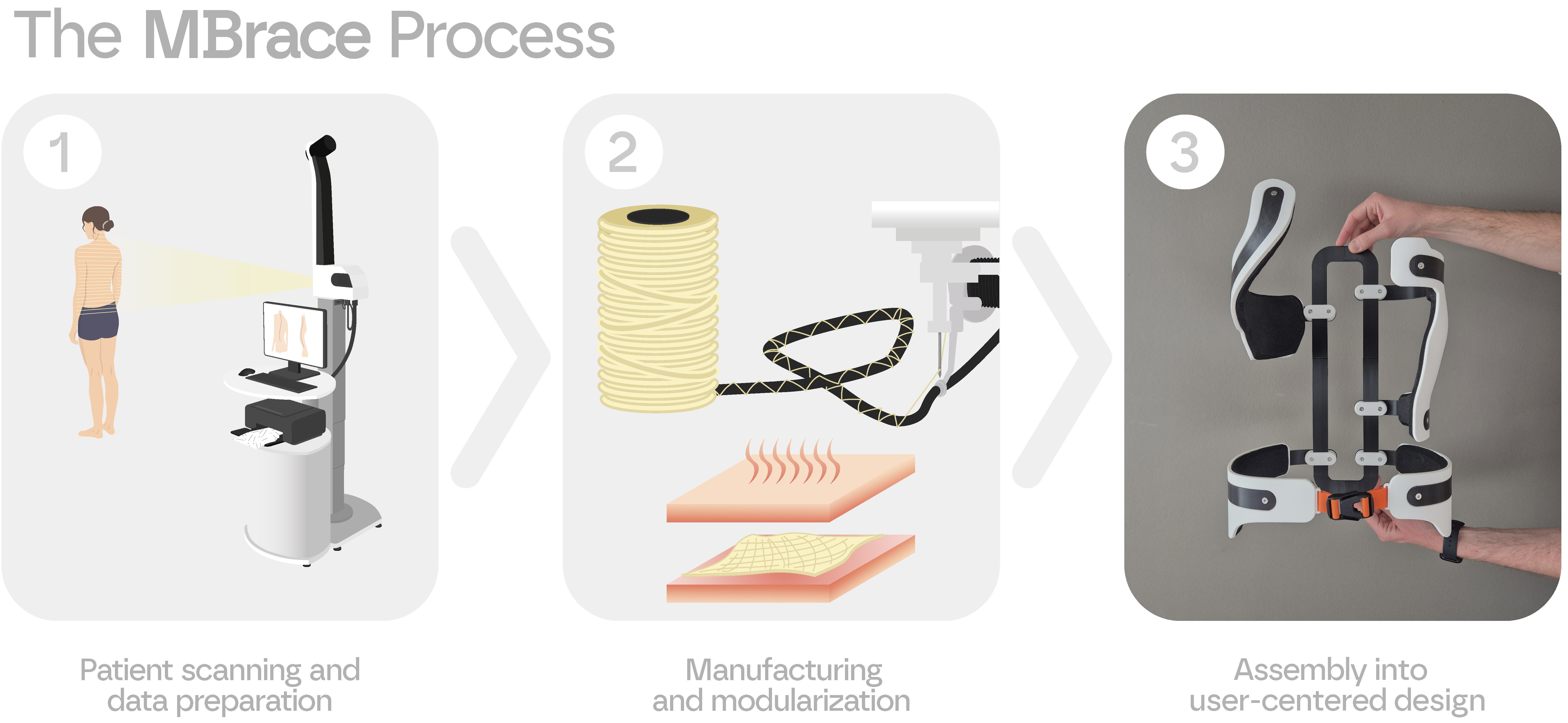Multi-Matrix Composites for Fashionable, Customized and Evolvable Braces - MBrace
Every year, 22 million Europeans are treated for adolescent idiopathic scoliosis, a spinal deformation developing during the ages ten to eighteen. Non-invasive treatment such as physiotherapy and bracing are the preferred options. The current brace treatment confines the upper body in a rigid polyethylene shell for approx. 23 hours a day, 7 days a week, from diagnosis until the end of growth. It is tedious and exhausting, especially in the heat of summer. And often, even the most disciplined teens and parents alike, face the challenge of choosing between continuing the suffering or suspending the treatment. Despite the restrictions, brace therapy is the most effective treatment of scoliosis, showing satisfactory results for 75 % of patients. The only existing alternative, in case of a severe scoliosis, is highly invasive surgery along the entire spine.
The MBrace project aimed to significantly improve the well-being of these young patients. It combined innovative developments of functional multi-matrix composites, high-strength mineral fibers, cost-efficient manufacturing and non-invasive AI-based monitoring with fashionable design to develop the lightest possible brace. The development and research of new materials and design concepts for flexible elements intended to give the body more range of motion and significantly increase patient compliance by reducing the limitations of conventional braces. The project transformed scoliosis braces from an uncomfortable fixation device into a supportive aid with high wearing comfort.
Starting after preliminary work on the individual fields of the partners at TRL 1, MBrace merged these fields to reach TRL 4, proving the functionality on a laboratory scale. The entire development was accompanied by patient studies to directly understand the effectiveness of each single development step.
Achievements:
- Eight publications (Three peer-reviewed papers, two scientific posters and three conference talks).
- Designing a user journey map based on expert and patient interviews, collecting steps in brace therapy and defining current problems and difficulties
- A user-centered design approach, identifying typical reasons for neglected brace treatment, was transferred into a fashionable and lightweight brace design aiming for a higher wearing adherence.
- An early stage demonstration part was manufactured and presented to the general public at the COSMO science exhibition from October 2024 till February 2025 in Dresden.
- Research and demonstration of the applicability of mineral fiber-reinforced multi-matrix composite materials for novel types of scoliosis braces by means of a tailored composite design and thermoplastic consolidation processes by additive manufactured molding technologies
- Manufacturing of a final demonstration brace for communicating project achievements
- A study was carried out on 500 scoliosis patients aiming to understand scoliosis in motion, describe a biomechanical model and improve scoliosis detection in the population
- To complement radiography in scoliosis monitoring, MBrace worked on establishing a non-ionizing analysis system
- Follow-up projects beyond the TRL4 to be fulfilled are in preparation to bring project achievements closer to practical applications

